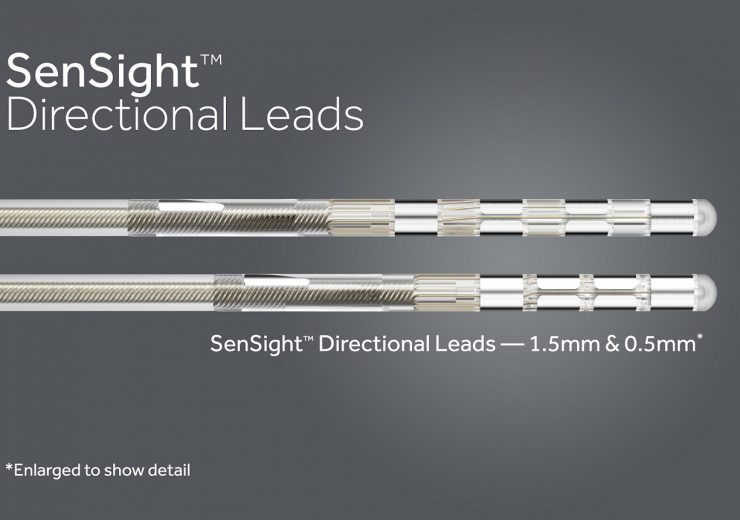SenSight has recently received CE Mark to enable patient-specific DBS therapy for symptoms related to movement disorders

SenSight Directional Lead System. (Credit: Medtronic.)
Medtronic has received the US Food and Drug Administration (FDA) approval for its SenSight directional lead system for use in deep brain stimulation (DBS) therapy.
SenSight has recently received CE Mark and is claimed to be the first DBS directional lead that combines the benefits of directionality with the potential of sense.
It enables patient-specific DBS therapy for symptoms related to movement disorders such as Parkinson’s disease, dystonia and essential tremor, and medically refractory epilepsy.
Medtronic brain modulation business vice president and general manager Mike Daly said: “We are excited to see the clinical benefits that the new SenSight directional lead system will provide to patients and physicians in the U.S.
“For over 25 years, Medtronic has driven discoveries and advancements in DBS therapy and we look forward to continuing to deliver meaningful innovation to the movement disorder and epilepsy patient communities.”
DBS therapy uses a small pacemaker-like device to send electrical signals through thin wires, dubbed leads, to a targeted area in the brain.
Medtronic said that its SenSight is the first directional and sensing-enabled lead that improves the identification of local field potentials (LFPs).
LFPs are the brain signals corresponding to the severity of Parkinson’s disease symptoms and are one million times smaller than DBS stimulation pulses.
When used with the Percept PC device, the system expands on BrainSense technology to enable clinicians to acquire and record directional LFP information from the implanted lead.
By identifying LFPs, physicians can correlate the brain signals with stimulation and events capturing medication, symptoms, or side effects to deliver customised therapy.
SenSight directional lead systems were first implanted at the University of Florida, with plans to be fully commercialised in the US immediately.
University of Florida professor of neurosurgery Kelly Foote said: “Until now, sensing capability and directional leads have not been available in the same DBS system, so we have had to choose one technology or the other, based on the predicted needs of each patient.
“Now, by coupling this new directional lead with a pulse generator capable of brain sensing, we are excited to be able to offer our patients the synergistic benefits of both technologies.
“Furthermore, the ability to continuously record brain activity while affected patients go about their daily lives is a powerful research tool that is rapidly improving our understanding of these brain circuitry disorders that diminish the lives of so many people.”
